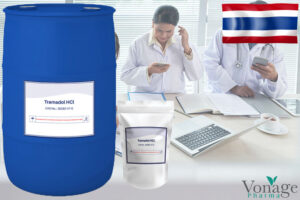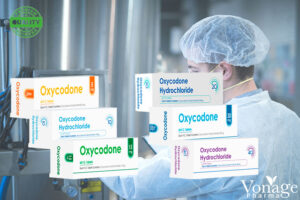The role of a methadone manufacturer is more critical than ever amid rising global demand for opioid dependence treatment and pain management solutions. Growing regulation and increased clinical adoption require manufacturers to uphold the highest standards in compliance, quality, and safety.
This comprehensive review will explore worldwide methadone manufacturer standards, recent market growth statistics, and essential compliance benchmarks relevant for pharmaceutical providers.
Methadone Manufacturer Market Outlook and Growth
The methadone market continues its rapid expansion, fueled by increased opioid substitution therapy, broader use for pain management, and regulatory support in many countries. In 2025, the global methadone hydrochloride market is projected to reach between $81.6 million and $133.3 million, with expectations to grow to $205 million by 2033 at a CAGR of 4.7% to 6.3%. North America and Asia-Pacific are key growth regions, while nations such as India, China, and the United States have become leading manufacturing hubs. (globalgrowthinsights)
Key statistics and insights: (globalgrowthinsights)
-
In 2025, the global methadone segment generated over $693 million in revenue, projected to reach $1.1 billion by 2030.
-
North America remains the largest market, though Asia-Pacific and emerging economies are registering the highest growth rates.
-
Sustained-release methadone tablets and new oral solutions are among recent product innovations, improving compliance, efficacy, and patient experience.
Methadone Manufacturer Regulations and Compliance
Methadone is classified as a controlled substance worldwide. Therefore, all methadone manufacturers must operate under stringent regulatory frameworks designed to ensure product traceability, patient safety, and appropriate medical use.
Good Manufacturing Practice (GMP)
-
Methadone manufacturers must comply with the World Health Organization’s GMP requirements, and supplementary local regulations set forth by bodies such as the FDA, EMA, and other regional authorities. (globalgrowthinsights)
- These include comprehensive process documentation, product validation, regular audits, batch tracing, and environmental controls.
Supply Chain and Distribution Compliance
-
Manufacturers are required to document the source of active pharmaceutical ingredients (APIs), maintain secure distribution channels, and keep accurate records from production to pharmacy-level delivery. (imarcgroup)
-
Regular inspections and recertification are the norm, with failure to comply resulting in severe penalties—including product recalls or loss of manufacturing licenses.
Emerging Trends in Compliance
-
The rise of telemedicine and decentralized opioid treatment delivery has prompted authorities to update recordkeeping and anti-diversion protocols.
-
Many methadone manufacturers now invest in serialization and digital supply chain tracking, enhancing safety and regulatory oversight.
Dosage Forms and Market Availability
To meet diverse clinical needs and national regulatory requirements, reputable methadone manufacturers have expanded their dosage and formulation portfolios. Commonly produced and distributed forms include: (globalgrowthinsights)
-
Methadone Hydrochloride API for compounding and formulation
-
Methadone Hydrochloride 5 mg tablets (often used for titration and low-dose regimens)
-
Methadone Hydrochloride 20 mg and Methadone Hydrochloride 40 mg tablets (intended for maintenance therapy and opioid substitution programs)
-
Methadone Oral Solution 25 mg/5 ml (favored in rehabilitation, palliative, and hospital settings, as well as for patients with swallowing difficulties)
Product innovations such as sustained-release tablets are further broadening access to methadone therapy and streamlining dosing schedules for patients.
Best Practices for Pharmaceutical Providers
Pharmaceutical providers must carefully assess methadone manufacturer compliance before procurement to ensure regulatory requirements and patient safety criteria are met:
-
Always verify GMP certifications and conduct due diligence on manufacturing partners.
-
Assess the traceability, batch control measures, and documentation processes implemented by the supplier.
-
Prioritize suppliers offering a comprehensive range of dosage strengths and formats to match clinical and jurisdictional needs.
-
Stay updated on evolving global standards for manufacturing, distribution, and post-market surveillance.
By working with compliant and innovative methadone manufacturers, providers can deliver safer, more effective treatment for opioid dependence and chronic pain.
Conclusion
As global demand for opioid dependence and pain management solutions increases, methadone manufacturer standards and compliance practices have consequently become central to industry integrity and public health. Therefore, today’s manufacturers must navigate complex regulatory frameworks, adapt to evolving compliance benchmarks, and invest continually in quality control. Providers, in turn, play a critical role in ensuring that the methadone they procure is sourced from reputable, certified manufacturers—ultimately safeguarding both their practice and their patients.
This review, therefore, relies on authoritative market and regulatory reports. Specifically, it draws from industry statistics and trends to provide a practical, up-to-date reference for pharmaceutical providers.







